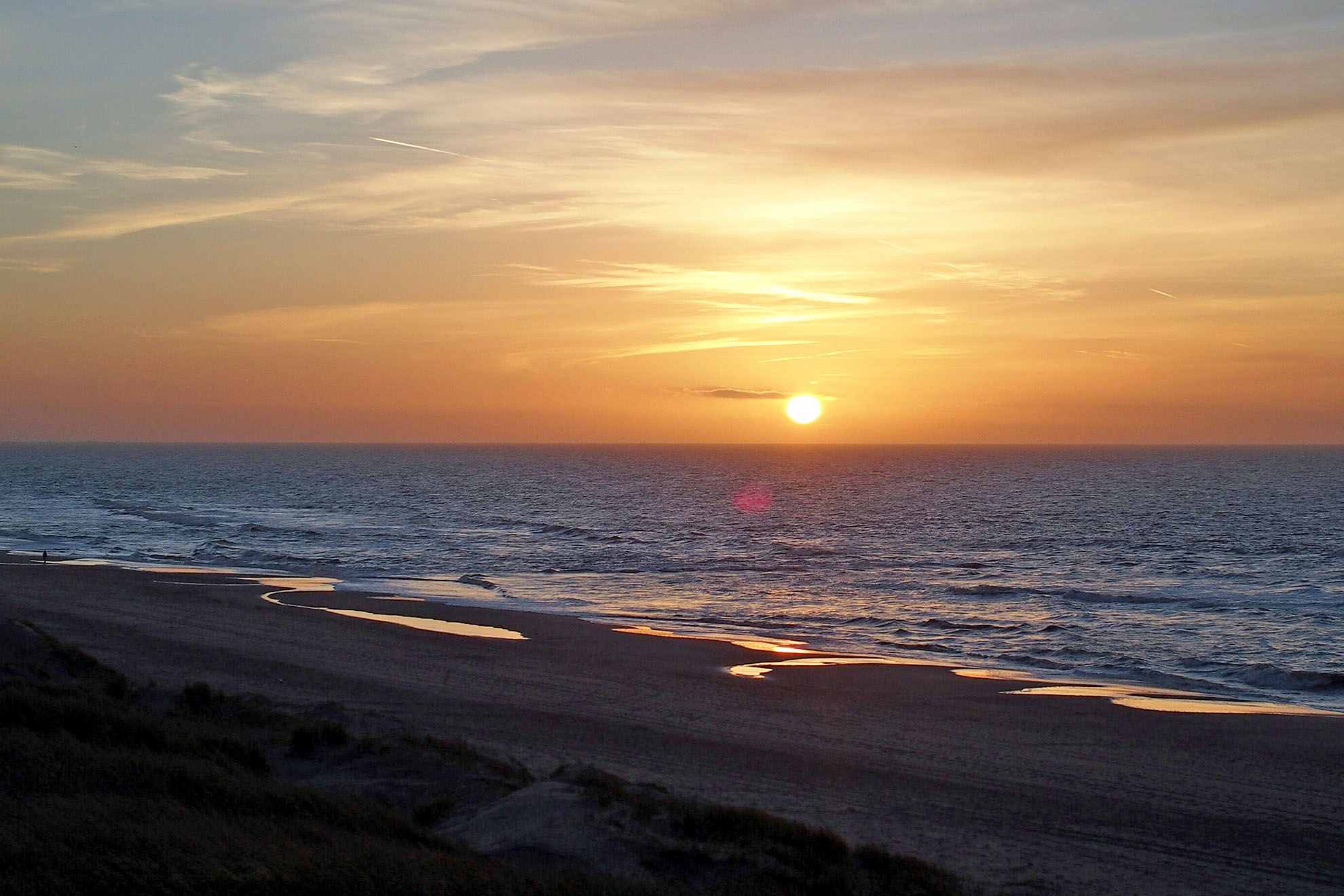Reede van Texel

Als je nu op de waddendijk bij Oudeschild over de zee uitkijkt, moet je veel fantasie hebben om je voor te stellen dat hier ooit sprake was van een wereldhaven. Toch was dat drie eeuwen lang zo. Vrachtschepen, walvisvaarders en oorlogsschepen lagen hier voor anker. Binnenvaartschepen, loodsvaartuigen en vissersboten krioelden ertussen door. Er was altijd wel iets bijzonders te zien. Een uitje naar de waddendijk bij Oudeschild was dan ook de grootste trekpleister van Texel.

De poort naar de wereld

De Reede van Texel dankt zijn bestaan aan de ligging aan het Marsdiep, oftewel de poort naar de Middellandse zee en de Atlantische Oceaan. Holland werd in de vijftiende en zestiende eeuw een belangrijke handelsnatie en de zeeschepen werden steeds groter. Ze kregen te veel diepgang om over de ondieptes in de Zuiderzee te komen. Daarom gingen ze leeg en zonder ballast naar de Reede van Texel om daar verder bevoorraad en opgetuigd te worden. En als ze volbeladen terugkwamen, werd de lading overgebracht op binnenvaartschepen voor het vervoer naar Medemblik, Enkhuizen, Hoorn en Amsterdam.
Wachten op de wind

Alles ging op het zeil. Een schip dat bestemd was voor een zuidelijke of westelijke bestemming moest op de Reede wachten op een bestendige noorden- of oostenwind. Dat kon soms maanden duren. In 1593 lag een vloot van 150 vrachtschepen voor anker op de Reede. Ze waren in het Oostzeegebied volgeladen met graan. Veel van dat graan was bestemd voor Italië. Maar de tussenstop bij Texel liep dramatisch af. In de Kerstnacht stak een verwoestende storm op, waarbij tientallen schepen verloren gingen.
Drinkwater
Een ander voordeel van een verblijf op de Reede was het drinkwater dat op Texel bij de Hoge Berg opgepomt werd. Dit zuivere, ijzerrijke water was lang houdbaar. De schepen van de VOC namen daarom veel vaten met dit water aan boord, want pas op de rede van Kaap de Goede Hoop kon weer nieuw water worden ingenomen.
Krijgsraad

De Reede was in de zeventiende eeuw ook een belangrijke uitvalsbasis voor de admiraliteiten. Tijdens de Engelse oorlogen verzamelden de vloten van de Hollandse admiraals zich op de Reede om samen uit te varen voor de zeeslagen. Verschillende hoogwaardigheidsbekleders van die Admiraliteiten vestigden zich op Texel. De buitenplaats Brakestein en het Doolhof op de Hoge Berg getuigen daar nog van.
Walvisvaart
In het voorjaar werden de walvisvaarders op de Reede klaargemaakt voor een tocht naar Groenland in de zomermaanden. Vooral in Den Hoorn woonden een aantal commandeursfamilies. Vaak namen zij familieleden of bekenden mee als bemanning. Soms kwamen ze leeg terug, soms met het ruim vol met vaten walvistraan en baleinen.
Loodsen

Voorbij het Marsdiep liggen de Haaksgronden. Dat zijn verraderlijke ondieptes die zich ook nog eens vrijwel jaarlijks verplaatsten. Daar wil geen schipper op vastlopen. Daarom namen de grote schepen steevast een loods aan boord die precies wist hoe je de ondieptes kunt vermijden. Die loodsen waren vaak Texelaars. De meesten woonden in Den Hoorn. Als het grote schip eenmaal in veilig diep water was, moest de loods terug naar huis. Kleine, snelle en zeewaardige zeilscheepjes voeren dus op en neer naar de vertrekkende zeeschepen.








